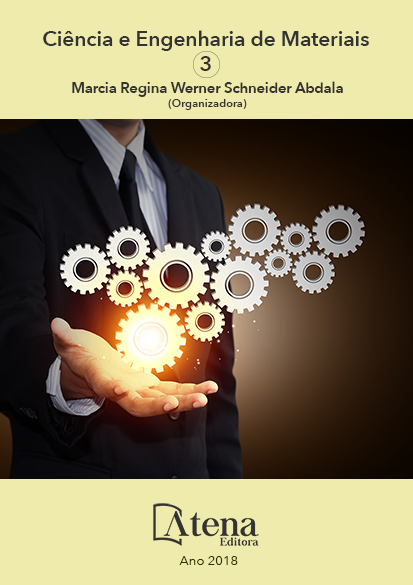
PROPRIEDADES MECÂNICAS E MORFOLOGIA DA FRATURA DE CONCRETO COM RESÍDUO DE BORRACHA DE PNEUS DO PROCESSO DE RECAPAGEM
Os resíduos gerados no processo
de recapagem de pneus são uma problemática
ambiental quando lançados de forma irregular
na natureza. Este trabalho objetiva utiliza-los
como agregado na produção de concretos
avaliando os efeitos da substituição em massa
de areia pelo resíduo de borracha em 5% e
10% nas propriedades mecânicas e morfologia
da fratura. Os materiais foram caracterizados
quanto a granulometria e morfologia. Foram
produzidos traços de concreto sem resíduo, e
com 5%, 10% de resíduo em substituição do
agregado miúdo pelo resíduo. Os corpos de
prova cilíndricos 10 cm por 20 cm, os quais
foram ensaiados segundo as normas NBR
5739 e NBR 7222 visando a determinação da
resistência à compressão axial e diametral. Para
analisar da superfície de fratura foi utilizado o
MEV. O Concreto com 5% apresentou tensão
de ruptura axial de 11,95 MPa e 14,53 MPa
aos 7 e 28 dias, respectivamente. Além disso,
o mesmo apresentou resistência a compressão
diametral de 1,07 MPa e 1,30 MPa aos 7 e
28, respectivamente. O Concreto com 10%
apresentou tensão de ruptura axial de 2,05
MPa aos 28 dias. A resistência à compressão
diametral foi de 0,30 MPa aos 28 dias. Os
resultados obtidos mostram que há uma redução
da resistência a compressão axial e diametral
a medida que há um aumento percentual da
substituição da areia pelo resíduo. Com relação
a superfície de fratura constatou-se algumas
regiões com boa adesão e com baixa adesão.
PROPRIEDADES MECÂNICAS E MORFOLOGIA DA FRATURA DE CONCRETO COM RESÍDUO DE BORRACHA DE PNEUS DO PROCESSO DE RECAPAGEM
-
DOI: Atena
-
Palavras-chave: Resíduo de borracha de pneu, Concreto leve, Concreto com resíduo de borracha de pneu, reciclagem.
-
Keywords: tire rubber residue, lightweight concrete, concrete with tire Rubber Waste, Recycling.
-
Abstract:
The waste generated in the tire
retreading process is an environmental problem
when released irregularly in nature.the present
study aims to use it as an aggregate in concrete
production evaluating the effects of replacing
mass of sand by rubber residue in 5% and 10% in the mechanical properties and
morphology of the fracture. The materials were characterized for particle size and
morphology. without waste concrete mixtures were produced (reference concrete), and
5%, 10% residue in place of the fine aggregate residue The cylindrical test specimens
10 cm by 20 cm, which were tested in accordance with NBR 5739 and NBR 7222
standard for the determination of resistance to axial and diametrical compression.
To analyze the fracture surface was used SEM. The concrete with 5% showed axial
tensile strength of 11.95 MPa and 14.53 MPa at 7 and 28 days, respectively. Moreover,
it showed diametrical compression strength of 1.07 MPa and 1.30 MPa at 7 and 28,
respectively. The concrete showed 10% axial tensile strength of 2.05 MPa at 28 days.
The concrete had the same diametrical compression strength of 0.30 MPa at 28
days. The results show that there is a reduction in resistance to axial and diametrical
compression measurement that there is an increased percentage of substitution of
the sand residue. Regarding the fracture surface it was found some areas with good
adhesion and low adhesion. The results indicate the possibility of some applications in
prefabricated elements for construction.
-
Número de páginas: 15
- Fábio Santos de Sousa
- Edwillson Gonçalves de Oliveira Filho
- César Tadeu Nasser Medeiros Branco
- Laércio Gouvêa Gomes


